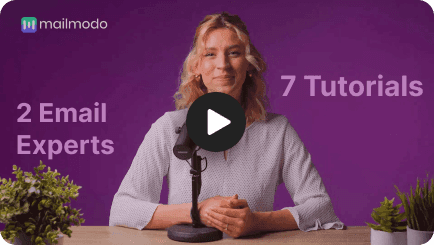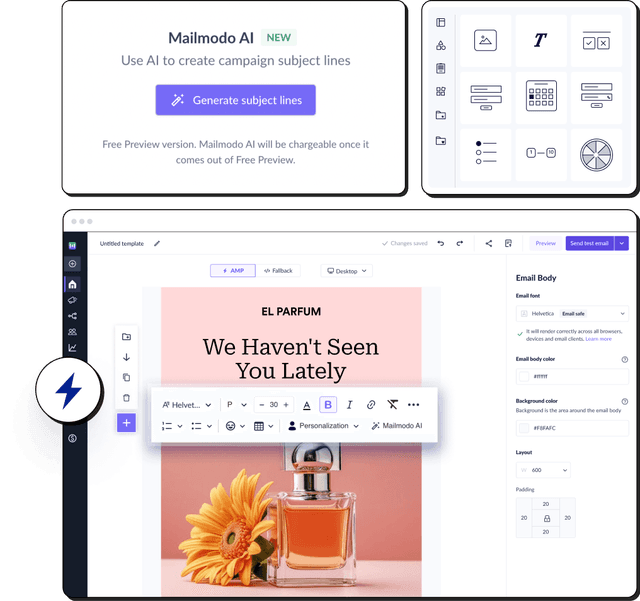What is pay-per-click (PPC)?
Pay per click (PPC) is an advertising model commonly used to drive traffic to your website where you place an ad on an advertisement platform (search engine results, website, etc.) and only pay the host a small fee every time someone clicks on your ad.
For example, you have placed an ad on Google as shown in the image below. Now you do not have to pay for people to see this ad. Rather, you will only pay if someone clicks on this ad.

Now, most people use the terms cost per click (CPC) and pay per click (PPC) interchangeably but they are not the same. PPC is an advertising model where you pay when people click on your ad, whereas CPC is the amount of money you spend for a single click on the ad.
How does the PPC model work?
Now, let's talk about how the PPC model actually works.
To do this, let me compare it with another famous advertising model and that's the cost per mille (CPM) model.
In the cost per mile model, you will pay a certain amount to the host for every one thousand impressions or views the ad gets. This means you are basically paying to show your ad to people.
Now, in pay per click, you will pay for every person who clicks on your ad. So you are only paying for the people who are interested in your brand and have clicked to find out more.
This is the basics of how pay per click advertising works. Now let's get more specific and see how different types of PPC models work.
For search engine pay per click advertising, first, you will select a few keywords that you want to rank for. The keywords you choose should be relevant to your brand.
Once you have selected a keyword, you need to bid how much you are willing to spend for every click on the ad for that particular keyword. This amount is essentially what people call cost per click (CPC).
The search engines use several tools to give a score to all the advertisers who have placed a bid. The score is determined by the amount of money the advertiser has placed and their content's quality.
If you win the bid, you will start ranking for that keyword. And, if people search for that keyword, you'll be shown at the top of the page.

If someone clicks on your ad, then you will pay the amount you bid, to the search engine, for every click.
Now for website PPC ads, the process is a little different. For this type of PPC ad, the host will give you a rate card that contains information about how much they charge for ad placement in different areas of their website. And you can choose where you want your ad to be shown and decide on a flat rate CPC.

In this type of PPC ad, rather than choosing the right keywords to rank for, you have to think about which websites you should place your ads in. And ideally, choose one that is in your niche but not a direct competitor for your brand.
These are primarily the two different types of PPC and how they work. Other PPC ads like Facebook ads, Linkedin ads, Twitter ads, etc., also work similarly. This guide will mainly focus on search and website PPC ads.
Pros and cons of the pay per click advertising model
Here's a look at some of the benefits and shortcomings of the pay per click model to help you determine if it's the right fit for you or not.
Pros
You pay when someone clicks on the ad so that you won't waste money unnecessarily. And, if you create a lot of sales from it, it would also be a good ROI. For example, if you pay $2 CPC, and that person has purchased $200 worth of stuff from you, you get a high ROI.
- Helps get better quality leads
It's easy to target your ideal customers with pay per click advertisements. And when you target your target audience, they are likely to be more interested in your brand, and you get better quality traffic and leads for your brand.
Also read: 4 Steps to Define Marketing Qualified Leads (MQLs)
- Helps with brand awareness
When you use PPC ads, you rank at the top of the search results page. So, if people search for certain topics and see you at the top of the page, they are made aware of your brand, what you offer, etc.
💡 Pro-tip: To make the most out of your PPC campaigns, you can use automation scripts to pause overspending campaigns, output reports in Google Sheets, or even track budgets across an entire Google Ads MCC.
Cons
One of the major disadvantages of the PPC model is that it can be subject to abuse like click fraud. However, Google and other engines have created several systems to protect you from such abusive clicks by competitors or corrupt web developers.
How to build a successful PPC campaign?
It's important to create a good PPC campaign because otherwise, it'll be money down the drain. Here are the steps you need to take to create a successful pay per click campaign.
1. Set goals
The first step you need to do is to decide what are the goals for your PPC campaign. What do you aim to achieve from it? Who is your target audience? Where are you going to place your ad? And so on.
Here are some of the key goals and parameters you should decide on before you create your ad campaign.
Target audience
Ad placement location - search engine, website, or social media.
Desired outcome - brand awareness, traffic, sales, or leads.
KPIs - key performance indicators (conversion rate, demo booking, signups, revenue generated, etc).
Type of campaign (search, display ads, social media ads, product listing, etc).
Side note: Product listing ads are the products shown on Google search results when someone searches for the keyword describing the product, as shown in the example below.

What device do you want to target - mobile, laptop, tablet, etc
Which particular locations do you want to target - States, countries, etc
Doing this will help you get a clear idea of what you want from your ads and will help you make decisions to get your desired results.
2. Research and select the right keywords
It is important to choose the right keywords that are relevant to your niche, and industry. Because otherwise even if you get a lot of clicks and traffic, they are not likely to purchase from you. So, avoid wasting your money and do a lot of research to find out which are the most important keywords to target.
You can do this research using keyword research tools like Ahrefs to find out which keywords related to your niche have good search volume to determine what your ICPs are looking for. Choose highly relevant, low cost and long-tail keywords to get the best results.
For website PPC ads, find out websites in your industry or niche that have a similar target audience as you do but are not your competitors.
3. Craft an ad campaign that'll resonate well with your audience
Now that you have set your goals and done the research it's time to create your ad campaign. In your campaign there are a few major elements that you need to optimize, these are
For the ad copy, you need to write a persuasive and informative copy that'll make the user understand what you offer and want to click on your ad. Look at the keyword/website you want to place your ads in and create a copy that's tailored to the platform or query. The targeted copy will help you point out people's pain points and entice them to click on your ad.
For the CTA, make sure it's short, actionable and in line with your goals. For example, if your goals are to get leads then tailor your CTA to prompt people to sign-up.
Now, each platform has its specifications of the character limit or word count for the ad copy. So, check with the platform you want to use before you start writing your copy.
4. Optimize PPC landing pages for conversions
Now, before you publish your ad campaign, you need to create a landing page where people can go if they click on your ad. The landing page has to be relevant to your ad, highly targeted, and provide a seamless experience.
It's important to create and optimize your landing pages because it directly influences how many people convert into paying customers. For example, if your landing page is disorganized and cluttered then people will click out from your website as they are confused and don't know what to do.
Here's what you should do to create a PPC landing page that'll increase conversions.
Write a big, bold headline containing the same information that is in your PPC ad.
Make sure your landing page design and layout are clean and easy to read and navigate.
Have a clear, actionable CTA.
Write a copy that's cohesive with the copy in your ad campaign.
Show what is being offered in the ad campaign.
A/B test your landing page to see which copy, graphics, or layout works the best.
And finally, link this landing page to your PPC ad campaign.
Related guide: A Guide to Landing Page Optimization for Maximum Conversions
5. Review and test your PPC campaigns
As it is for all types of marketing campaigns, PPC campaigns are also not a one and done process. You need to periodically review your campaign, check if it is doing well or not and problem solve. This will help you optimize your ad campaign and get good results from it.
Here's what you've got to do to review and optimize your PPC campaign.
Link your Google ads to Google Analytics or CRM like Hubspot to track the amount of traffic generated, conversions - sales, lead generation, demo booking, signup etc.
For website ads, ask the host for the analytics data.
Check the reports to see if the data matches your goals for the campaign. For example, are you getting the number of signups you had expected from the campaign?
If you are not getting good results, you need to change up your target keywords, modify the copy, CTA, etc.
And if some keywords are completely underperforming, you can remove those entirely.
Keep reviewing and testing until it produces the results you desire. For more PPC optimization tips and digital marketing strategies, check out Digital Tabby to improve your campaign performance.
Create your PPC campaign today
Now that you know how to create a great pay per click campaign, create your PPC campaign and put it out on Google ads, website ads, social media ads, etc. But don't neglect your organic marketing efforts as you should have a combination of organic and paid marketing to get the best results for your business.
Now that you have got some leads from your PPC campaign, what's next? Nurture them using email marketing to slowly convert them into paying customers.
What you should do next
Hey there, thanks for reading till the end. Here are 3 ways we can help you grow your business:
Talk to an email expert. Need someone to take your email marketing to the next level? Mailmodo’s experts are here for you. Schedule a 30-minute email consultation. Don’t worry, it’s on the house. Book a meet here.
Send emails that bring higher conversions. Mailmodo is an ESP that helps you to create and send app-like interactive emails with forms, carts, calendars, games, and other widgets for higher conversions. Get started for free.
Get smarter with our email resources. Explore all our knowledge base here and learn about email marketing, marketing strategies, best practices, growth hacks, case studies, templates, and more. Access guides here.













